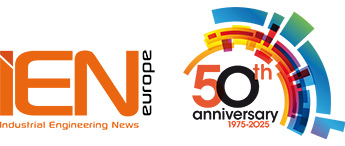A SICON® conveyor belt from ContiTech in continuous use transporting flue-gas-desulfurization (FGD) gypsum at a coal-fired power station.Flue-gas-desulfurization (FGD) plants make coal-fired power stations cleaner. They almost completely eliminate the sulfur dioxide content of the flue gas, which can lead to acid rain. This makes an important contribution to protecting the environment, and know-how from ContiTech is playing its part, as the procedure results in what is known as FGD gypsum. This is 100 percent utilized: It is used in the construction materials industry, for example, as a substitute for natural gypsum.
At its power station in Heilbronn, Germany, EnBW Kraftwerke AG transports its FGD gypsum on a belt conveyor system from ContiTech; the SICON pocket conveyor. This belt has been shown to be not only extremely curve-negotiable and economical, but also ultra-eco-friendly in performance. ''With its pouchlike shape, the belt provides a unique answer to the problem of transporting bulk materials. It remains closed from the feeding point to the discharge point and is capable of negotiating small-radius bends, so that transfer stations are no longer required. As the belt is also closed on the return side, it completely eliminates dust pollution and soiling of the conveyor system due to spillage'', explains Jörn Gehl, application engineer at the ContiTech Conveyor Belt Group. This provides complete protection for the materials being conveyed and prevents pollution of the environment. Another advantage is that the belt has self-cleaning properties.
At EnBW's power station, the pocket conveyor is loaded with FGD gypsum from 3 feeding points and transports a total of 10 to 20 metric tonnes of this material every hour. Three dewatering belt filters are installed upstream from the belt system. The feeding points are located inside a building, out of which the conveyor belt is then routed over numerous pipelines and stairways to the discharge point on the plant premises. Inside the building, the engineers have succeeded in maneuvering the flexible belt around tight, and sometimes complex, corners and angles so as to put the conveyor into operation as quickly as possible. The conveyor system and outdoor facilities were installed by Anlagenbau und Fördertechnik Arthur Loibl GmbH, a company engaged in plant engineering and materials handling technology. This section of the pocket conveyor hangs from a lightweight, open truss bridge with a catwalk on one side for maintenance and inspection of the rotating parts.
Running at a speed of 0.9 m/s the absolutely dust-tight belt conveyor carries bulk goods weighing 1 t/m3 from the feeding point through to the discharge point. The pocket conveyor type installed at EnBW has a maximum conveying capacity of 24 m³/h. It operates 5 to 6 days a week, covering the 126 meter route countless times. The belt conveyor has thus shown itself here to be a flexible, safe and eco-friendly solution for the transport of materials outdoors over tight, twisty routes.
Pocket Conveyor Belts
for greater flexibility
- by ContiTech Antriebssysteme GmbH
- February 1, 2009
- 1481 views


































